Intro:
The Jaeger-LeCoultre Master Compressor Diving Compressor is part of JLC's newest full line of timepieces, which also includes a GMT Diver and the innovative Geographic Pro Depth Gauge. I chose the the chronograph by virtue of its more useful (to me) complication, and aesthetics, however I would be proud to have any of them in my stable. JLC also introduced a limited series of divers earlier this year that were developed with input from the U.S. Navy SEALs. Of this series, I'm partial to the Diving Alarm, but I'll save that review for another day. ;-).
So, what of the MCDC? Well, when you come right down to it, it's a bit of an odd duck. For example, it's a so-called "luxury diver" -- with an MSRP of $11,875, what else would it be? -- yet it's fully ISO 6425 certified to 1000M and beyond (JLC sent one down 1080 meters in front of the press upon its introduction). It's finished impeccably to JLC's lofty standards, replete with polished flourishes on the lugs, and has a keenly detailed caseback; yet rather than stainless steel or precious metals, it's fashioned from non-corrosive grade five titanium to cut down on weight. And then there's the movement... While I can't say that it has no place in a watch of this ilk, I'm hard pressed to think of another 1000M dive chrono that features an in-house, column wheel chronograph, replete with a vertical coupling clutch and a rotor supported by ceramic ball bearings. More on that later.
The Watch:
At 44mm x16.5mm, the MCDC is no shrinking violet on the wrist, that's for certain. However, thanks to the dial/bezel ratio, and generously proportioned lugs (22mm, if you're wondering), it sits well on my 7" wrist. While there's no ignoring it, it doesn't demand attention the way that my buddy Luke's PAM 202 does. The titanium is finished like steel, so it's brighter than say, an IWC AT 2000; and the crown and pushers are clad in rubber to make them easier to operate in the wet. The laser-etched 60-click titanium bezel operates with crisp detents that require exactly 3 newtons of force, and the polished ridges on the edge provide excellent grip in all conditions.
Each watch in the series is offered in three different configurations: Titanium bracelet, articulated rubber bracelet, or signed rubber strap. I chose the articulated rubber bracelet, which is exactly what it sounds like -- namely, a bracelet made out of rubber. It's supremely comfortable, and thanks to its steel frame, it adds a bit of heft that would otherwise be lacking due to the lightweight case. The clasp is fashioned from titanium, and features JLC's ingenious micro adjustment system that allows you to add up to 8mm in length without adding a link. This makes finding your perfect fit a cinch. In my opinion, this is the signature look for this watch, but frankly, if you're going to go diving with this beauty, the supplied cordura velcro strap is the way to go. I haven't mounted it yet, but if you're curious to see what it looks like, a Google search should cure what ails you.
The MCDC's flat black dial features a traditional tri-compax layout, with the 30-minute register at the 3 o'clock position, the seconds register at 6 o'clock, and the 12-hour register at 9 o'clock. What isn't so traditional is the seconds subdial, which has been replaced with a rotating blue and white disk that JLC refers to as the "movement operating indicator. For anyone who has even a passing familiarity with with Extreme World Chronograph, this will be a familiar touch; and while I'm definitely digging the novelty of it, I'm still on the fence as to whether or not it's actually more effective at indicating that the movement is operating than a regular, old second hand. At least it's lumed. The date aperture is at 4:30, and is black on white. Most would prefer a white on black date wheel, but I'm one of those rare individuals who actually prefers the greater contrast afforded by black on white. The hands are what JLC refers to as "trapeze" hands, and are generously lumed, as are the raised, polished indices. And speaking of lume, it's green, and works just fine. I would've preferred blue, but then I've been spoiled by UTS in this regard. It won't shame a PO or GP SH II Pro, but it goes all night. I just wish the subdials were lumed as well like they are on my UTS 600M, but seeing as how most chronos skip this step, I can't really take off points for this oversight.
The heart beating within is JLC's c.751 automatic chronograph movement. This mechanical marvel was introduced in 2004 on the Master Compressor Chronograph, and has the distinction of being JLC's first automatic chronograph. As I mentioned earlier, this is a true column wheel chronograph with a vertical coupling clutch, which, in the simplest terms, means that it starts instantly, and it can be operated constantly without any additional wear on the movement. In addition to all the vertical/column/coupling mumbo jumbo, it also features a free-sprung variable inertia balance, Spyr geartrain, and twin barrels, that endow it with an exceptional 65+ hours of power reserve. Heck, the list goes on, but there's only so much time in the day... For MCDC duty, a "D" was added to the end of its numerical designation. It seems pretty clear to me that this stands for "Diver". What isn't clear, however, is what is different from the standard version. They both have the exact same performance specifications and are both comprised of exactly 272 individual parts. The only difference that I can see is that the 751 D is a bit thicker. Perhaps the base plate was beefed up for diver duty? Whatever. All I know is that the pushers activate with delectable precision, and the chronograph second hand has the smoothest sweep this side of a Seiko Spring Drive. I haven't had a chance to check it for accuracy, but like all JLCs, it must pass their 1000 hour "master control" test in order to be certified for use. That's good enough for the likes of me.
Of course, any review of a watch with the words "Master" and "Compressor" wouldn't be complete without an explanation of what this term means. Rather than utilize a screw-down crown or screw-locked pushers, the MCDC employs what JLC refers to as compression keys. To ensure water-resistance, one merely needs to give the key a quarter turn (half turn for the crown), and the toric gasket is sealed, or "compressed", if you will. In the case of the chronograph pushers, the pushers can be operated underwater, so the compression keys serve mainly to prevent unwanted presses. In fact, a JLC fan on another board challenged the president of JLC, Jerome Lambert, to put his money where his mouth was and lend him an MCDC to use on a dive. Lo and behold, Mssr. Lambert took him up on it, so, for those who don't believe that the chronograph can be used underwater, Google is your friend (the fan posted a rather detailed account of his dive, along with a ton of pictures -- a fascinating read).
Conclusion:
The MCDC is pretty much everything that one would expect from a company like JLC. It's beautifully finished, accurate, and overall as much of a joy to look at as it is to operate. Is it the end all be all of diving chronographs? Nope. If I were on a do-or-die cave/wreck dive, and for some reason I absolutely had to have a chronograph, I'd be wearing my UTS 600M. It may not go as deep, or have as nice a movement, but it's far more legible at a glance and has better lume, which is really the point of a watch like this. That said, the MCDC is a JLC first and foremost, which pays for all in my book. I love it, love it, love it, and couldn't be happier with my purchase. It's a special watch, and you know what, it feels special on the wrist.
The Pictures:
![Image]()
![Image]()
![Image]()
![Image]()
![Image]()
![Image]()
![Image]()
![Image]()
![Image]()
![Image]()
Thanks for looking!
Regards,
Adam
The Jaeger-LeCoultre Master Compressor Diving Compressor is part of JLC's newest full line of timepieces, which also includes a GMT Diver and the innovative Geographic Pro Depth Gauge. I chose the the chronograph by virtue of its more useful (to me) complication, and aesthetics, however I would be proud to have any of them in my stable. JLC also introduced a limited series of divers earlier this year that were developed with input from the U.S. Navy SEALs. Of this series, I'm partial to the Diving Alarm, but I'll save that review for another day. ;-).
So, what of the MCDC? Well, when you come right down to it, it's a bit of an odd duck. For example, it's a so-called "luxury diver" -- with an MSRP of $11,875, what else would it be? -- yet it's fully ISO 6425 certified to 1000M and beyond (JLC sent one down 1080 meters in front of the press upon its introduction). It's finished impeccably to JLC's lofty standards, replete with polished flourishes on the lugs, and has a keenly detailed caseback; yet rather than stainless steel or precious metals, it's fashioned from non-corrosive grade five titanium to cut down on weight. And then there's the movement... While I can't say that it has no place in a watch of this ilk, I'm hard pressed to think of another 1000M dive chrono that features an in-house, column wheel chronograph, replete with a vertical coupling clutch and a rotor supported by ceramic ball bearings. More on that later.
The Watch:
At 44mm x16.5mm, the MCDC is no shrinking violet on the wrist, that's for certain. However, thanks to the dial/bezel ratio, and generously proportioned lugs (22mm, if you're wondering), it sits well on my 7" wrist. While there's no ignoring it, it doesn't demand attention the way that my buddy Luke's PAM 202 does. The titanium is finished like steel, so it's brighter than say, an IWC AT 2000; and the crown and pushers are clad in rubber to make them easier to operate in the wet. The laser-etched 60-click titanium bezel operates with crisp detents that require exactly 3 newtons of force, and the polished ridges on the edge provide excellent grip in all conditions.
Each watch in the series is offered in three different configurations: Titanium bracelet, articulated rubber bracelet, or signed rubber strap. I chose the articulated rubber bracelet, which is exactly what it sounds like -- namely, a bracelet made out of rubber. It's supremely comfortable, and thanks to its steel frame, it adds a bit of heft that would otherwise be lacking due to the lightweight case. The clasp is fashioned from titanium, and features JLC's ingenious micro adjustment system that allows you to add up to 8mm in length without adding a link. This makes finding your perfect fit a cinch. In my opinion, this is the signature look for this watch, but frankly, if you're going to go diving with this beauty, the supplied cordura velcro strap is the way to go. I haven't mounted it yet, but if you're curious to see what it looks like, a Google search should cure what ails you.
The MCDC's flat black dial features a traditional tri-compax layout, with the 30-minute register at the 3 o'clock position, the seconds register at 6 o'clock, and the 12-hour register at 9 o'clock. What isn't so traditional is the seconds subdial, which has been replaced with a rotating blue and white disk that JLC refers to as the "movement operating indicator. For anyone who has even a passing familiarity with with Extreme World Chronograph, this will be a familiar touch; and while I'm definitely digging the novelty of it, I'm still on the fence as to whether or not it's actually more effective at indicating that the movement is operating than a regular, old second hand. At least it's lumed. The date aperture is at 4:30, and is black on white. Most would prefer a white on black date wheel, but I'm one of those rare individuals who actually prefers the greater contrast afforded by black on white. The hands are what JLC refers to as "trapeze" hands, and are generously lumed, as are the raised, polished indices. And speaking of lume, it's green, and works just fine. I would've preferred blue, but then I've been spoiled by UTS in this regard. It won't shame a PO or GP SH II Pro, but it goes all night. I just wish the subdials were lumed as well like they are on my UTS 600M, but seeing as how most chronos skip this step, I can't really take off points for this oversight.
The heart beating within is JLC's c.751 automatic chronograph movement. This mechanical marvel was introduced in 2004 on the Master Compressor Chronograph, and has the distinction of being JLC's first automatic chronograph. As I mentioned earlier, this is a true column wheel chronograph with a vertical coupling clutch, which, in the simplest terms, means that it starts instantly, and it can be operated constantly without any additional wear on the movement. In addition to all the vertical/column/coupling mumbo jumbo, it also features a free-sprung variable inertia balance, Spyr geartrain, and twin barrels, that endow it with an exceptional 65+ hours of power reserve. Heck, the list goes on, but there's only so much time in the day... For MCDC duty, a "D" was added to the end of its numerical designation. It seems pretty clear to me that this stands for "Diver". What isn't clear, however, is what is different from the standard version. They both have the exact same performance specifications and are both comprised of exactly 272 individual parts. The only difference that I can see is that the 751 D is a bit thicker. Perhaps the base plate was beefed up for diver duty? Whatever. All I know is that the pushers activate with delectable precision, and the chronograph second hand has the smoothest sweep this side of a Seiko Spring Drive. I haven't had a chance to check it for accuracy, but like all JLCs, it must pass their 1000 hour "master control" test in order to be certified for use. That's good enough for the likes of me.
Of course, any review of a watch with the words "Master" and "Compressor" wouldn't be complete without an explanation of what this term means. Rather than utilize a screw-down crown or screw-locked pushers, the MCDC employs what JLC refers to as compression keys. To ensure water-resistance, one merely needs to give the key a quarter turn (half turn for the crown), and the toric gasket is sealed, or "compressed", if you will. In the case of the chronograph pushers, the pushers can be operated underwater, so the compression keys serve mainly to prevent unwanted presses. In fact, a JLC fan on another board challenged the president of JLC, Jerome Lambert, to put his money where his mouth was and lend him an MCDC to use on a dive. Lo and behold, Mssr. Lambert took him up on it, so, for those who don't believe that the chronograph can be used underwater, Google is your friend (the fan posted a rather detailed account of his dive, along with a ton of pictures -- a fascinating read).
Conclusion:
The MCDC is pretty much everything that one would expect from a company like JLC. It's beautifully finished, accurate, and overall as much of a joy to look at as it is to operate. Is it the end all be all of diving chronographs? Nope. If I were on a do-or-die cave/wreck dive, and for some reason I absolutely had to have a chronograph, I'd be wearing my UTS 600M. It may not go as deep, or have as nice a movement, but it's far more legible at a glance and has better lume, which is really the point of a watch like this. That said, the MCDC is a JLC first and foremost, which pays for all in my book. I love it, love it, love it, and couldn't be happier with my purchase. It's a special watch, and you know what, it feels special on the wrist.
The Pictures:

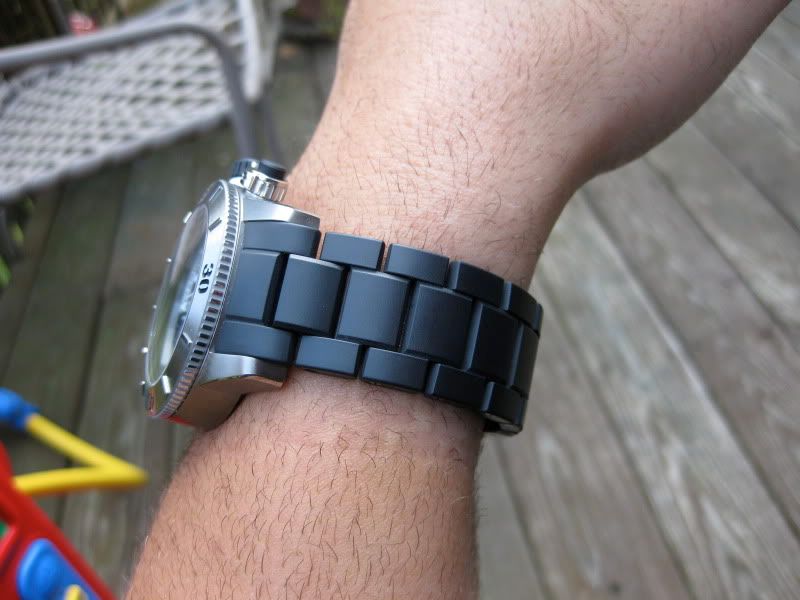
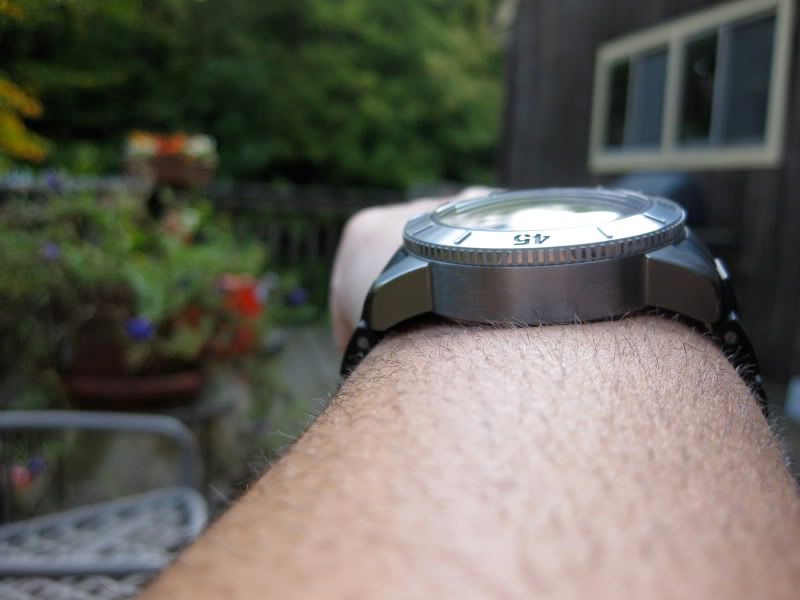
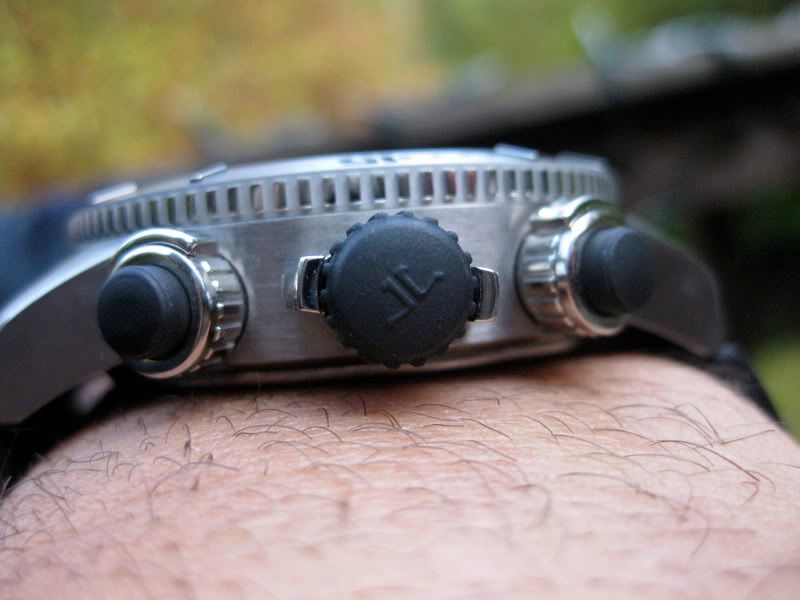
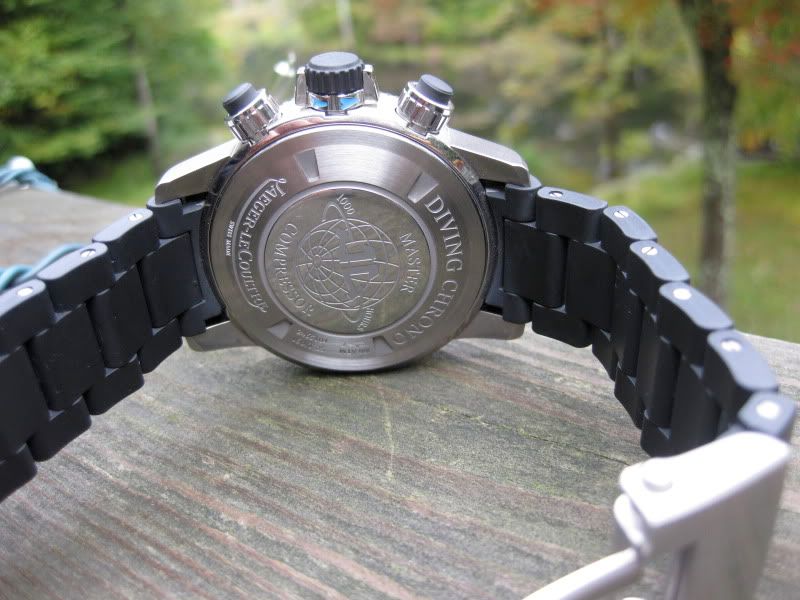
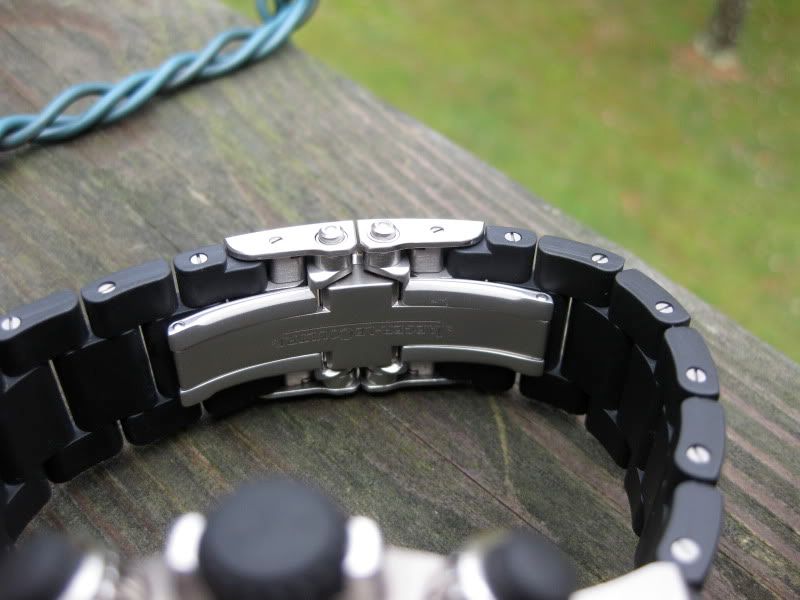
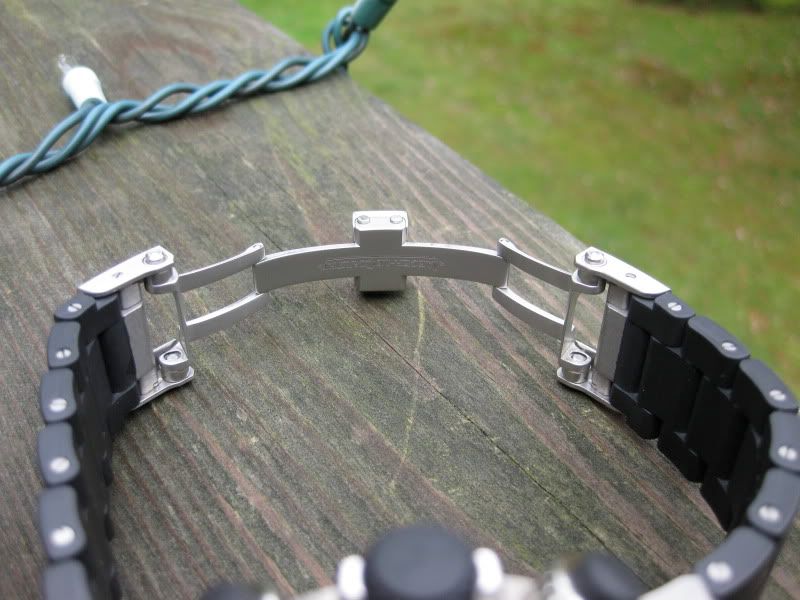
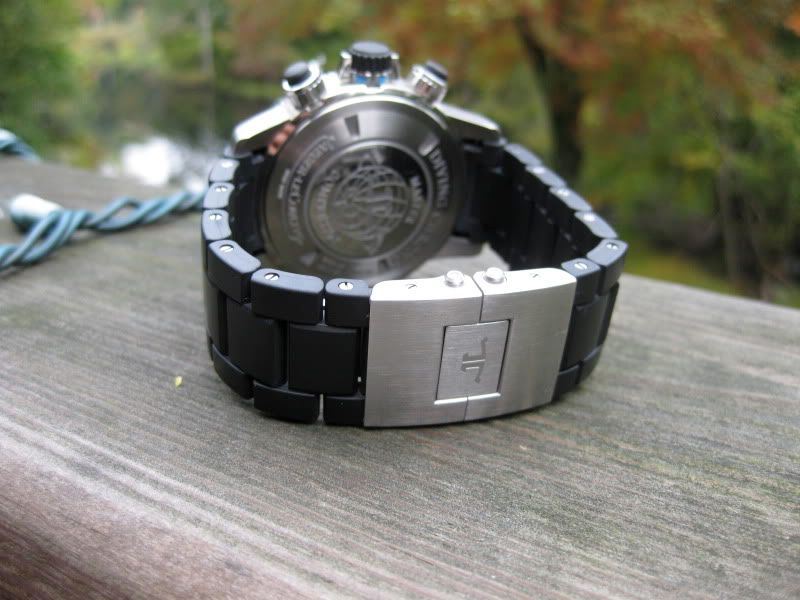
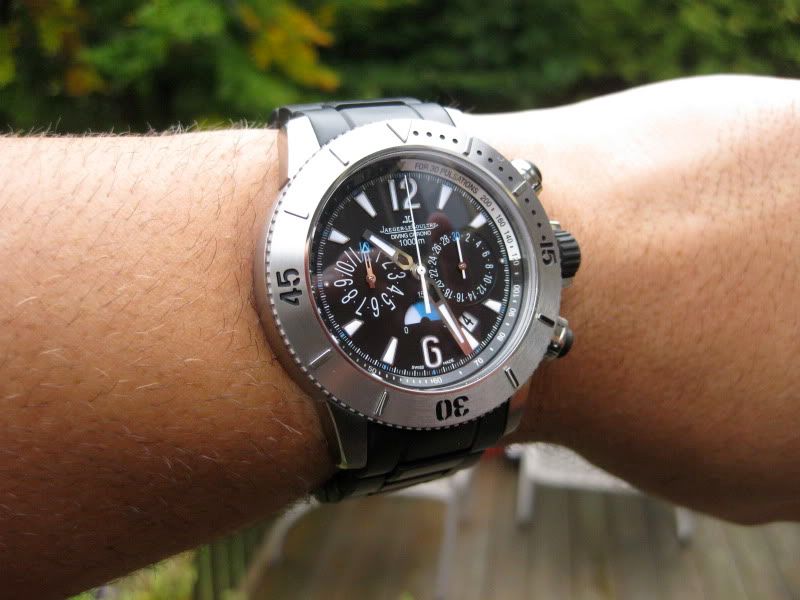

Thanks for looking!
Regards,
Adam





